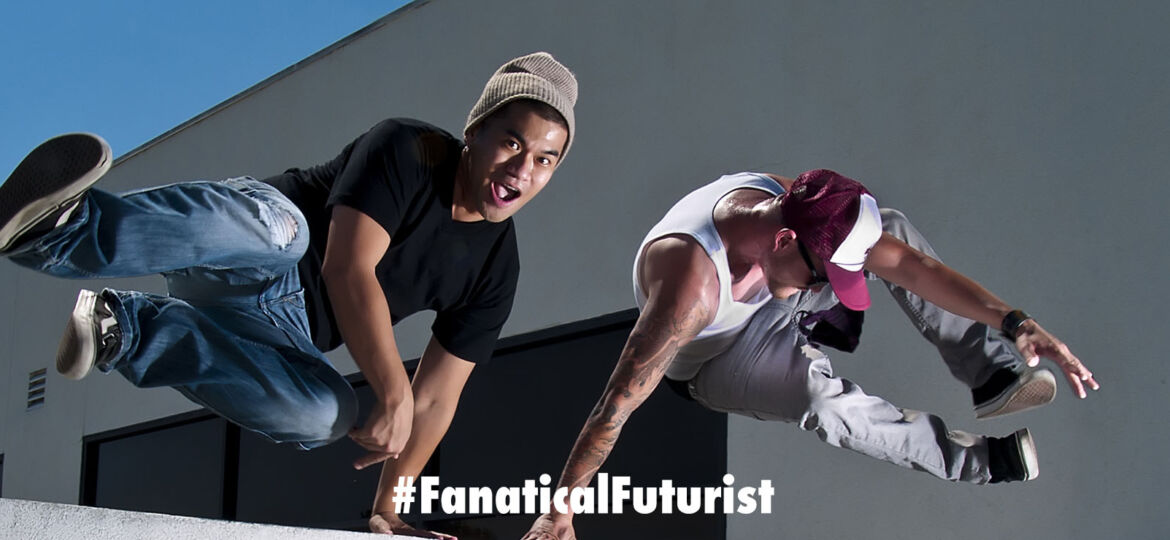
WHY THIS MATTERS IN BRIEF
While Atlas looks like, and is, the world’s most advanced humanoid robot alot of its behaviours and movements are still pre-programmed.
 Love the Exponential Future? Join our XPotential Community, future proof yourself with courses from XPotential University, connect, watch a keynote, or browse my blog.
Love the Exponential Future? Join our XPotential Community, future proof yourself with courses from XPotential University, connect, watch a keynote, or browse my blog.
It can run, balance like a professional tight rope walker, dance, and do parkour, and now arguably the world’s most advanced humanoid robot, Atlas, can do it all even better. A new video released the other day has the bipedal humanoid robot stealing the show again as two Atlas robots navigate a complex parkour course, complete with leaping onto and between boxes of different heights, shimmying down a balance beam, and throwing synchronised back flips.
The big question that may be on many viewers’ minds is whether the robots are truly navigating the course on their own – making real-time decisions about how high to jump or how far to extend a foot – or if they’re pre-programmed to execute each motion according to a detailed map of the course.
As engineers explain in a second new video and accompanying blog post, it’s a combination of both.
Can you Parkour like a robot?
Atlas is equipped with RGB cameras and depth sensors to give it “vision,” providing input to its control system, which is run on three computers. In the video above, and previous videos of Atlas doing parkour, the robot wasn’t sensing its environment and adapting its movements accordingly, although it did make in-the-moment adjustments to keep its balance.
But in the new routine, the Boston Dynamics team says, they created template behaviours for Atlas. The robot can match these templates to its environment, adapting its motions based on what’s in front of it. The engineers had to find a balance between “long-term” goals for the robot, such as making it through the whole course, and “short-term” goals, like adjusting its footsteps and posture to keep from keeling over. The motions were refined through both computer simulations and robot testing.
“Our control team has to create algorithms that can reason about the physical complexity of these machines to create a broad set of high energy and coordinated behavior,” said Atlas team lead Scott Kuindersma. “It’s really about creating behaviors at the limits of the robot’s capabilities and getting them all to work together in a flexible control system.”
The limits of the robot’s capabilities were frequently exceeded while practicing the new parkour course, and getting a flawless recording took many tries. The explainer video includes bloopers of Atlas falling flat on its face, not to mention on its head, stomach, and back, as it under-rotates for flips, crosses its feet while running, and miscalculates the distance it needs to cover on jumps.
I know it’s a robot, but you can’t help feeling sort of bad for it, especially when its feet miss the platform, by a lot, on a jump and its whole upper body comes crashing onto said platform, while its legs dangle toward the ground in a move that would severely injure a human.
Ultimately, Atlas is a research and development tool, not a product the company plans to sell commercially, yet, which is probably good, because despite how cool it looks doing parkour, I for one would be more than a little wary if I came across this human-shaped hunk of electronics wandering around in public – as happened with a robotic Spot the dog who was recently conscripted to help the NYPD bag perps.
“I find it hard to imagine a world 20 years from now where there aren’t capable mobile robots that move with grace, reliability, and work alongside humans to enrich our lives,” Kuindersma said. “But we’re still in the early days of creating that future.”
















